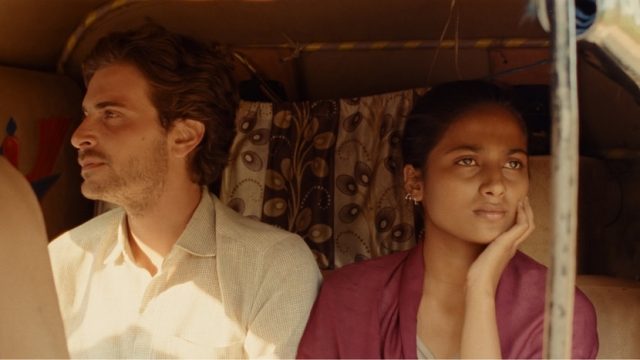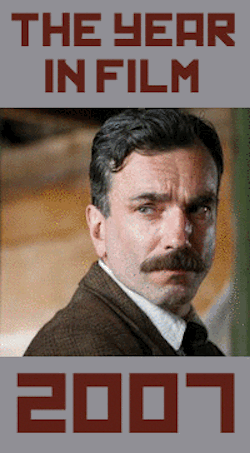AFI Fest 2018: Maya, by Scott Nye
Mia Hansen-Løve has built her films on the kind of trauma rarely explored onscreen, for its effects are minute, indescribable, and typically tempered by the person experiencing them. Whether it’s encountering an ex-boyfriend you still long for (Goodbye, First Love), hitting the walls of career advancement (Eden), or building a new life after your husband leaves you (Things to Come), I’m often reminded, when watching her films, of all the pain we bury under the notion that it’s not extreme enough to warrant an outlet.
Maya is a departure in several ways, but most overtly in that it deals with trauma that everyone immediately – almost annoying – acknowledges as such. Gabriel (Roman Kolinka) has just returned home to Paris after four months of captivity in Syria. As a war journalist, he was perhaps too aware of the risks, insisting to concerned friends that he will get back to work as soon as possible in exactly the same field. But first, since he has the time, he’s taking a trip to India. It will be better than the therapy everyone else suggests he attend to, he insists. In India, he can attend to a family property, visit his godfather Monty (Pathy Aiyar), and maybe even track down his mother, from whom he’s long been estranged. Along the way he meets and bonds with Monty’s friendly, sharp teenage daughter Maya (Aarshi Banerjee), and if you think that a female director is going to spare you the discomfort that follows, well, you don’t know the French.
Kolinka, grandson of Jean-Louis Trintignant, shares with the legendary actor a compelling opacity, concealing much while seducing the camera. He would have made an excellent performer for Eric Rohmer or Robert Bresson. His resting expressing is withholding, so even when he’s comfortable among friends, something seems a little off. He displays few signs this hiatus is even proving relaxing – midway through the film, he takes an idyllic trip through India, sleeping on roofs in the mid-afternoon sun, motorcycling around bustling towns, crossing beautiful countryside by train. When he returns to his home base in Goa, all he can say about it is that he’s glad to be back and was sick of the trains.
He approaches the inevitably tryst with Maya cautiously, constantly directing her away from him, clearly aware that such consummation would be in some way wrong. By the time he cannot resist her, the film has carved a space where redemptive, cathartic, rejuvenating experiences are not necessarily morally just. Besides the May/December romance (though at 16-17 and 30, I suppose it’s more of a March/June), Maya is also playing on the white-man-abroad narrative, where a privileged westerner travels to an “exotic” country and exploits it for the spiritual centeredness it can provide while ignoring the issues plaguing it. And Maya is quite conscious of some issues plaguing India – the gaps of wealth, the western influence, the real estate wars, and the disintegration of local culture in the midst of these struggles. Gabriel largely ignores all that, providing only rote positive reinforcement.
So by the time the romance is introduced, we know Gabriel to be a severely traumatized man who has difficulty experiencing true pleasure, disconnected from his mother, and willing to take from another country what it can provide him while giving little back. Whatever he has with Maya might be reinvigorating, but it’s only for himself. He’s had love affairs before and he’ll have more to come. For her, this is a foundational experience, one she’ll never truly be able to cast aside as he will (it makes a nice companion piece to Goodbye, First Love in this respect, as well as the issue of the age difference).
Hansen-Løve is too mature a filmmaker to insist on these points, but I don’t think I’m pulling this stuff out of nowhere either – I would have liked to see the film twice, but as I caught the second of two screenings, that will not be possible for many months. She’s operating very much in the tradition of Rohmer, exploring the rough emotional terrain that boils underneath breathtaking scenery and beautiful people. Cinematographer Hélène Louvart is certainly not shy about making India look spectacular, and I really can’t say enough good things about the montage mentioned above. Breathtakingly shot and assembled, the only other one I can think of at all like it is the similar montage from The Curious Case of Benjamin Button; like that film, Hansen-Løve and her team introduce countless indelible shots that implant in the conscious before vanishing entirely, impressing upon the audience the ephemeral nature of travel, the way it all starts to blur together after the slightest remove. Marion Monnier has edited all of Hansen-Løve’s films, and the talents she utilized to condense several years into a series of fleeting moments and scenes is beautifully applied to this more contained story. Simple movements, like getting Gabriel from Paris to India, are accomplished minimally – Gabriel driving through Paris, a reverse shot of India in front of him, then back to Gabriel, now in the back seat of a taxi. Give her something more complex, like a brief car chase and a potential knife fight, she’ll highlight only the specific items and faces at Gabriel’s immediate vantage (this is a vintage Bresson move, playing just as well today).
Hansen-Løve has taken what could easily be a small, familiar story of a man finding his spiritual center and used every turn in the common outline to interrogate this motive – where it comes from, how it is gained, and if anything of true value comes from it – burying within it questions of colonialism, entitlement, sexual conquest, parenthood, and more. And if this all sounds like I or the film am excessively critical of a character who’s a journalist and captivity survivor, it is only to flesh out what is otherwise evident in the film – that Gabriel remains a sympathetic figure, continually haunted by what he has experienced, the deadly fate he avoided, and the guilt of having returned at all (one of his colleagues is still trapped there when he returns). That he should seek spiritual and emotional solace is not itself wrong. The uneasy space the film explores is when things that are wrong, but not necessarily destructive, are viewed positively, and whether immoral or amoral acts can have positive effects, and what, in turn, that means.
Even after the great films Hansen-Løve has turned out, this is strikingly mature territory, inherently contradictory and confident enough to not going around making a big show of it. It reaffirms Hansen-Løve as not just one of our best filmmakers, with a mastery of the dual crafts of writer/director, but also one of the medium’s most thoughtful, sensitive, and inquisitive. I was floored by this film, and I cannot wait to see it again.



























